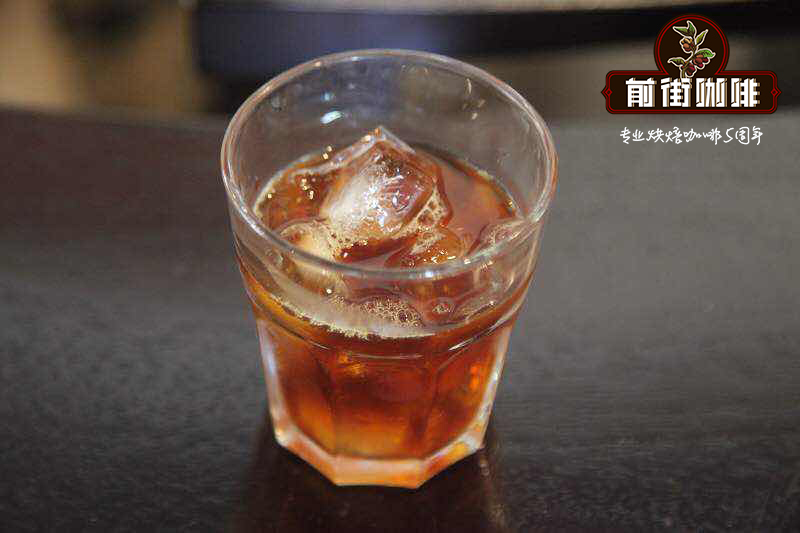Boutique Coffee Manor in Central America: Tobush Manor in Costa Rica

Professional coffee knowledge exchange more coffee bean information please follow the coffee workshop (Wechat official account cafe_style)
Costa Rica has a mild climate, rainy mountains and fertile soil formed by volcanoes, which makes it the most suitable environment for coffee growth. In addition to the superior growth environment, the Costa Rican government also had the foresight to vigorously develop the coffee industry at the beginning of the 19th century. So far, Costa Rican coffee has surpassed cocoa, tobacco and sucrose as an important cash crop and a major source of finance.
In 1821, the city government of San Jose distributed free coffee saplings to its neighbors, and then introduced preferential policies such as giving away land for five years. This series of policies make it the first country in Central and South America to establish a complete coffee industry. While 1/3 people in Costa Rica are engaged in coffee-related industries, it can be said that coffee is an integral part of the country.
Costa Rican coffee because of its high latitude, high altitude geographical factors, making a large temperature difference between day and night, coffee flavor substances are rich, has a good acidity, but also very soft and balanced. Due to the local volcanic soil is very fertile, and good drainage, so also have the necessary conditions for high-quality coffee.
Costa Rica has eight major coffee producing areas, namely: the Western Valley West Valley, the Central Valley Central Valley, Tarasu Tarrazu, Sanhe Tres Rios, Eurosci Orosi, Brenka Brunca, Duli Alba Turrialba, Guanacaster Guanacaste. Among them, Tarrazu is one of the major coffee producers in the world.
The Grupo Los Grande de Copey SA (Hacienda Copey) Group, founded in 2011, has three main estates, Hacienda Copey, Finca Tobosi and Finca Don Antonio. Finca Tobosi, located two hours south of the Costa Rican capital San Jose, is owned by the Jorge Bernes family in 2010. Jorge Bernes, who comes from a coffee family, has been growing coffee since his grandparents and was one of the first coffee growers in the Tarrazu region, apparently inheriting coffee-growing genes left over from his grandparents.
The average elevation of Finca Tobosi is between 1500 and 1600 meters above sea level, with varieties such as Red&Yellow Catuai, Villasarchi and Geisha, and a land area of 23 hectares. They strive to be perfect in the process of growing coffee. According to height differences and environmental tests and soil analysis, they have selected the areas that give best play to the characteristics of coffee to ensure the healthy growth and adequate nutrition of coffee beans.
Another manor Hacienda Copey is located in Dota de Copey, with a relatively large land area of 90 hectares and a higher elevation of between 1900 and 2000 meters. The planting variety is similar to that of Tobusch, but the microclimate is particularly different in different producing areas. It is worth mentioning that Finca Don Antonio, another estate owned by the Grupo Los Grande de Copey SA (Hacienda Copey) Group, which was founded in 2011, won the first place in the Costa rica COE competition in 2017, which is no accident under the competition of many contestants.
Important Notice :
前街咖啡 FrontStreet Coffee has moved to new addredd:
FrontStreet Coffee Address: 315,Donghua East Road,GuangZhou
Tel:020 38364473
- Prev

Introduction to Central American boutique coffee estate: NARANJO El Cafetal, Costa Rica
Professional coffee knowledge exchange more coffee bean information Please pay attention to the coffee workshop (Wechat official account cafe_style) Costa Rica has a mild climate, rainy mountains and fertile soil formed by volcanoes, which makes Costa Rica the most suitable environment for coffee growth. In addition to the superior growth environment, the Costa Rican government also had the foresight to start at the beginning of the 19th century.
- Next

African Boutique Coffee Estate Introduction: Kenya Chania Estate
Professional coffee knowledge exchange More coffee bean information Please pay attention to coffee workshop (Weixin Official Accounts cafe_style) Kenya variety origin: At present, most of Kenya coffee varieties are improved from Bourbon SL28SL34, while French missionary coffee is the original Bourbon species before improvement. French missionaries introduced bourbon coffee to Kenya in 1892, avoiding the risk of coffee being grown in Kenya.
Related
- Does Rose Summer choose Blue, Green or Red? Detailed explanation of Rose Summer Coffee plots and Classification in Panamanian Jade Manor
- What is the difference between the origin, producing area, processing plant, cooperative and manor of coffee beans?
- How fine does the espresso powder fit? how to grind the espresso?
- Sca coffee roasting degree color card coffee roasting degree 8 roasting color values what do you mean?
- The practice of lattes: how to make lattes at home
- Introduction to Indonesian Fine Coffee beans-- Java Coffee producing area of Indonesian Arabica Coffee
- How much will the flavor of light and medium roasted rose summer be expressed? What baking level is rose summer suitable for?
- Introduction to the characteristics of washing, sun-drying or wet-planing coffee commonly used in Mantenin, Indonesia
- Price characteristics of Arabica Coffee Bean Starbucks introduction to Manning Coffee Bean Taste producing area Variety Manor
- What is the authentic Yega flavor? What are the flavor characteristics of the really excellent Yejasuffi coffee beans?

